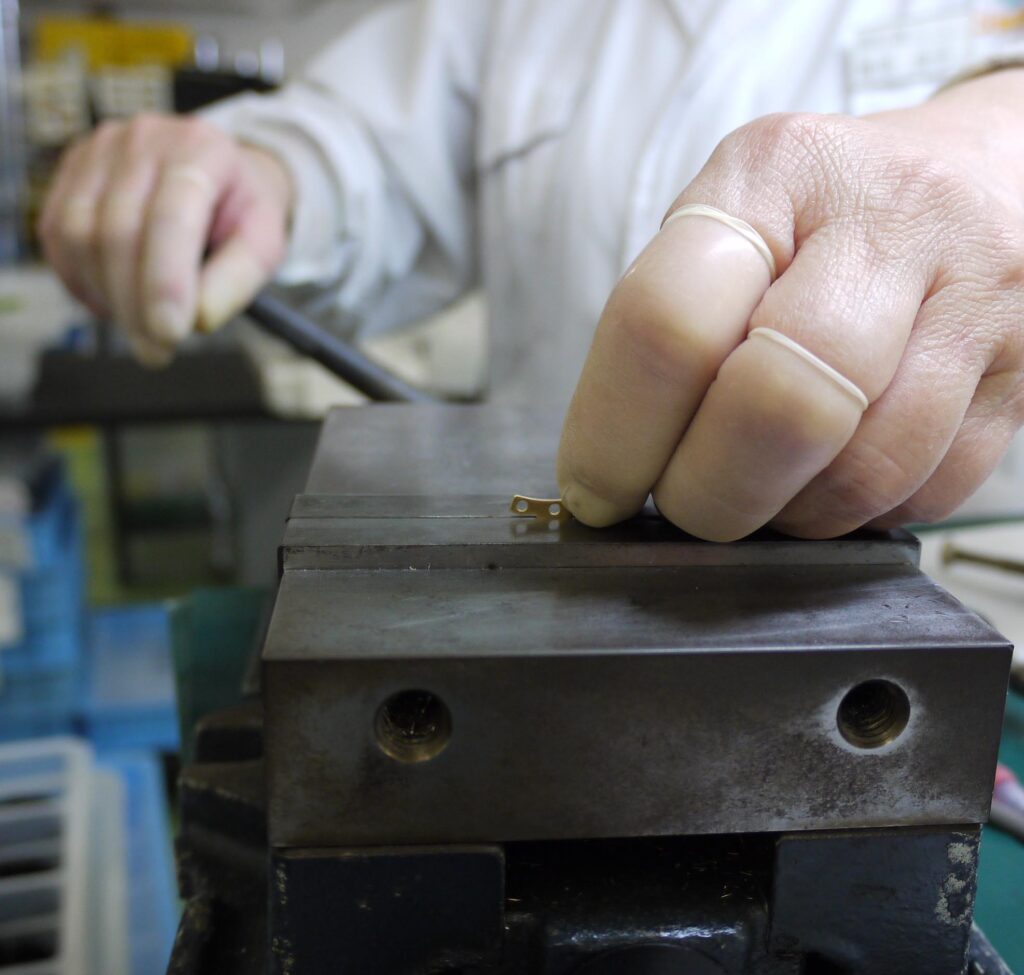Individually matching rectilinear keys and guides

The above photograph takes a peek inside a parts stocker on the floor of our Nakano factory where we make high-end interchangeable lenses. Known as “rectilinear keys,” these small parts are just over 10 mm in length and are used to keep the internal components of a lens barrel moving in a straight line when the helicoid is operated. Because a rectilinear key moves along a guide groove etched into the outside of the helicoid, the front lens group moves forward and backward without any turning. This rectilinear key can be considered a standard component of helicoids used with modern lenses.

A rectilinear key will not move if its salient part is wider than the width of the guide groove it mates with. But, if afforded too much play, the key loosely engages the guide and consequently rattles, which in turn greatly affects the feel when the helicoid ring is operated by hand. What this means is that the amount of play judged acceptable for popular motor-driven products could very well lack the finesse of a high-end optical product that is manually operated.
This is why Cosina carefully adjusts each rectilinear guide to its mating guide grove. The key’s engaging of the guide is adjusted by immobilizing the metal key in a vise and essentially widening it ever so slightly by applying pressure.

With manual focus lenses, a suitable uniform torque that ensures a smooth consistent feel is required for certain focusing. After being individually adjusted, a rectilinear key is assembled into its hosting helicoid unit and checked that it moves smoothly by turning helicoid by hand. If there is any incompatibility at all, it is readjusted to make sure that the parts fit just right.
The processes for adjusting the rectilinear keys are not automated, nor does Cosina have any plans to do so. Though it makes some sense to develop sensing technologies and set parameters that quantify these sensorial intricacies, we think that it is wise to manually hone the mechanical quality of high-end optical products.